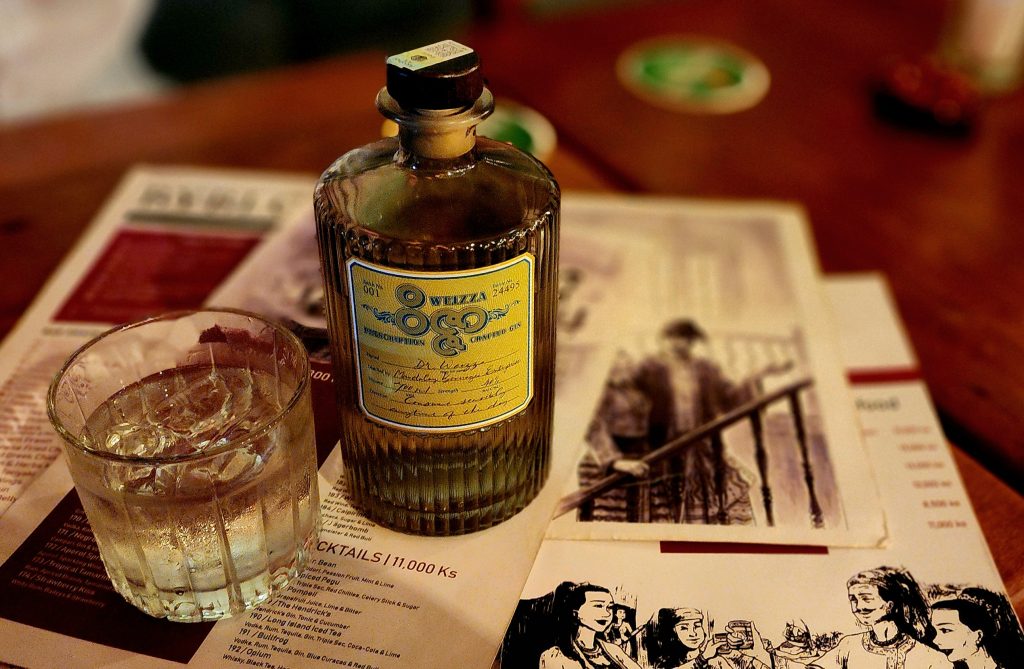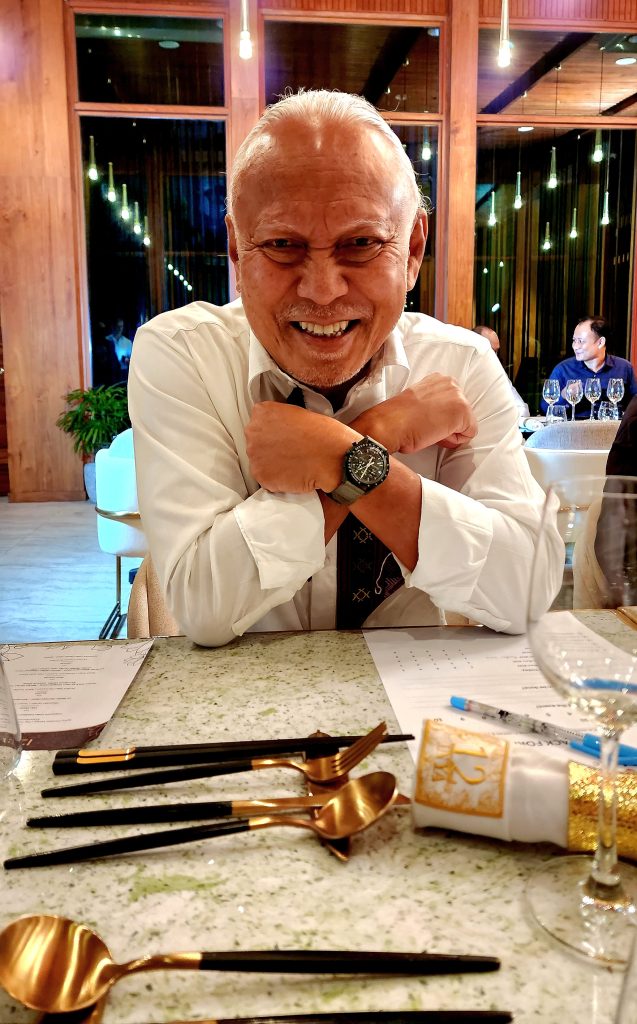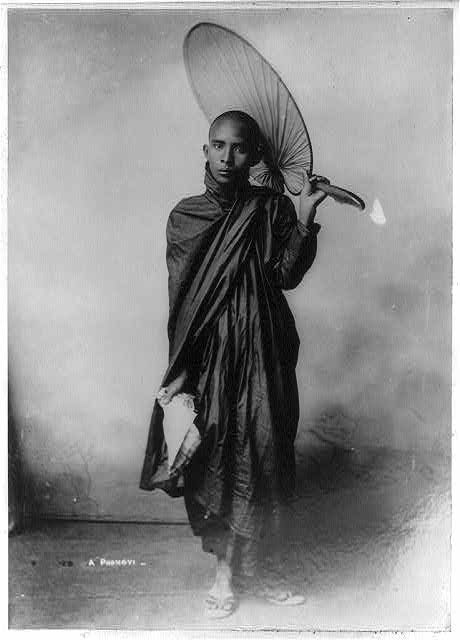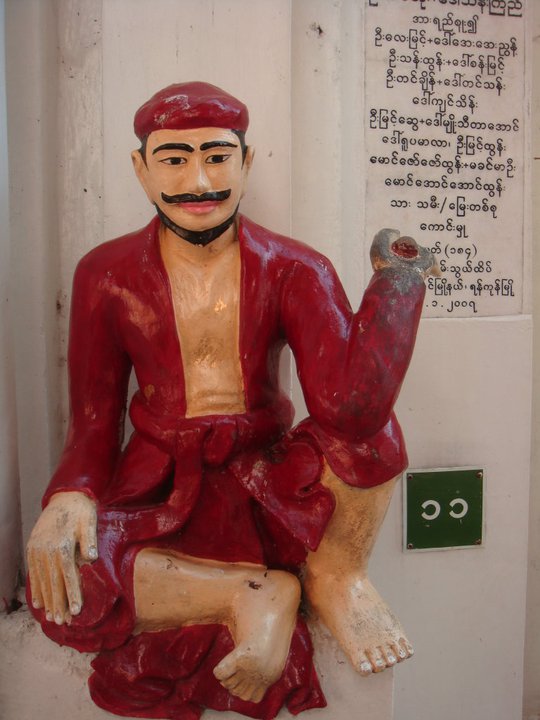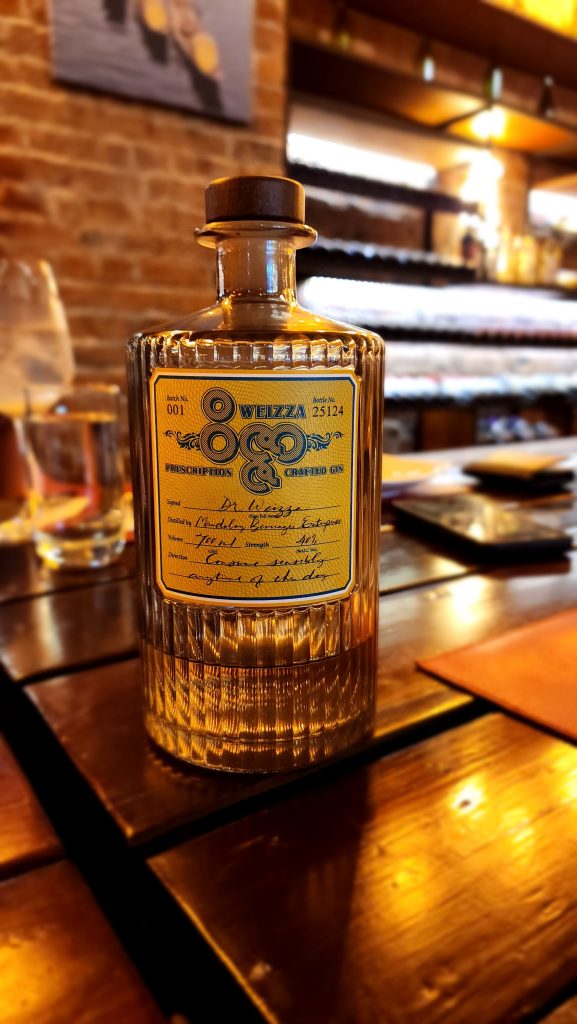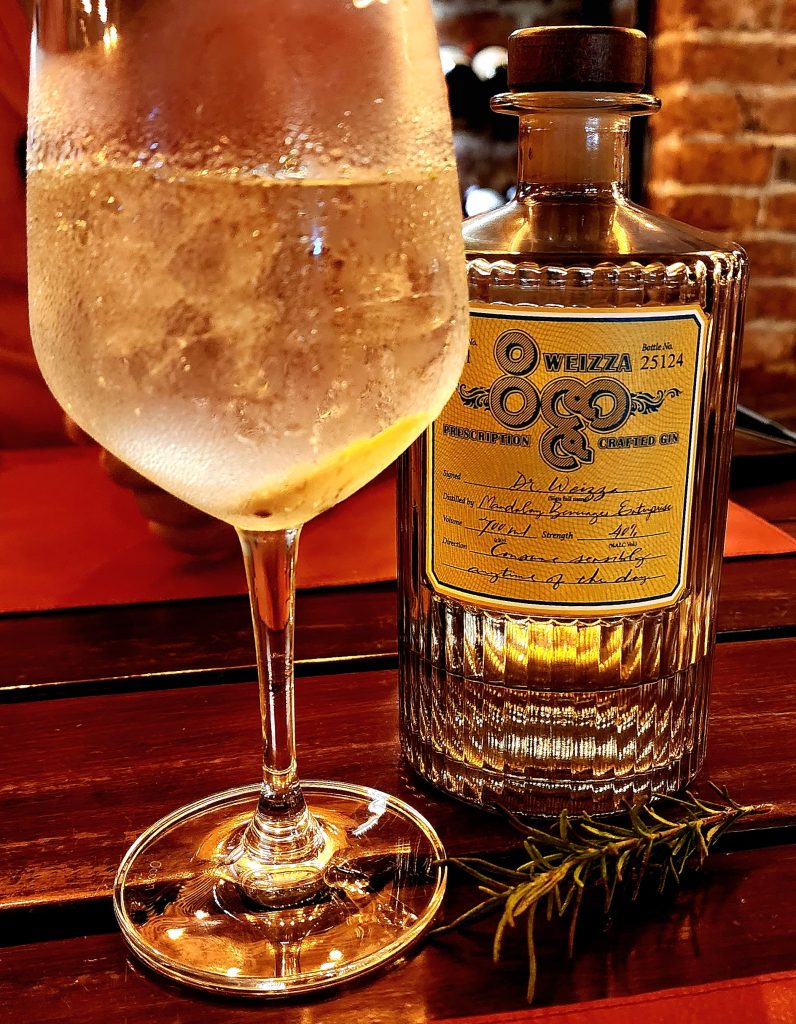Mandalay’s Medicinal Tincture
Dr. Weizza Prescription Gin
From a small batch still in Mandalay, comes this potent potion of pure essence, infused with a veritable apothecary of botanicals and aromatics, divined by a Se Weizza to create a mystical, magical nepenthe.
Dining at Yangon’s famous old-quarter icon ‘Omnivore,’ proprietor and culinary wizard U Sharkey quietly slid this druid’s tonic onto our table. I was immediately drawn in, the nostrum bottle hypnotically commanding my gaze. You never forget your first whiff: exotic, intoxicating, nor your first sip: sublime, seductive, salacious, I fell immediately under its spell.
Time stopped, universes collapsed, angels sang, ailments were remedied, and souls whispered to me of my dreams. What sorcery is this!? I had entered the world of the Beindawsayās and Sônz and would now, forever, be on the road to Mandalay.
The Wizards of Burma
Weizza (Burmese: ဝိဇ္ဇာ, Pali: vijjādhara) are an immortal, supernatural mystic wizard in Burmese Buddhism, associated with the esoteric and the occult, and practicing in the recitation of spells, mysticism, and alchemy. They are revered as being both saints and wizards, having attained their powers after years of living as hermits, meditating and studying the Weizza grimoires.
Late last century I met a living Weizza, the monk Thamanya Sayadaw, at his monastery atop Thamanya Taung, before he chose to travel to a higher plain, from where he waits for Metteya. I had travelled across the globe to kneel before him and experience his light.
Many Burmese pagodas house weizza shrines, where they are venerated for their spiritual purity and their devotion to those in need. The Economist tells us that modern Weizza teachers have amassed hundreds of thousands of followers using social media.
According to the Scottish journalist and colonial administrator, Sir James Geroge Scott, there are two classes of wizards in Burma, the sônz, who are a bane on society and practitioners of black magic, whilst the Weizza help people by lifting the bad curses placed on them by the sônz.
The Weizza are divided into four major orders:
The Pyada Weizza, who work with mercury
The Than Weizza, who work with iron
The Se Weizza, who specialize in medicine
The In Weizza, who specialize in yantra signs and squares
The Than Weizza and In Weizza are the most powerful. The Pyada Weizza, or Mercury Wizards, study alchemy to produce gold and silver from common metals. The Than Weizzas are considered by their followers to be masters of not only their subject but are also medical advisors.
Some Weizzas possess the ability to see past lives, observe and hear things that are far away, read minds, teleport, dive into the earth, walk on water, and be in multiple places simultaneously. Powerful practitioners are purported to live for centuries and choose the time of their next reincarnation.
The In Weizza, who work with cabalistic squares, use one’s birth date and time to create powerful amulets, charms, and spells.
There are two schools of weizza medicine; The datsayās, who focus on diets and the beindawsayās, who work with potent drugs and concoctions. The human body is divided into four elements (dats): earth (patawi dat), fire (tezaw dat), water (apaw dat), and air (wayaw dat). Ancient practitioners also included ether (akatha).
Weizza prescriptions are composed of many botanicals, herbs, spices, roots, barks, leaves, seeds and minerals and the ingredients are gathered during specific phases of the moon.
The Botanicals
Dr. Weizza’s Prescription Gin is infused with an exotic list of aromatics and botanicals: Juniper, Lavender, Pu-er tea, Angelica root, Jujube, Malted Barley, Coriander Seeds, Shauk Thi (Burmese Lime) Peel, Orange Blossom, Ginger, Pimento, and Cinnamon, all handled with a wizard’s deft touch.
A veritable potpourri of aromas waft up from your glass, luring you in like whispered incantations, mysterious and attractive. On the palate, the spirit is all hearts, potent but it’s the good magic here, the infusions are a cornucopia of bliss, a pleasure as complex, intriguing and wonderful as this vast golden land.
Gin was once made in London bathtubs and known as ‘Mother’s Ruin.’ In colonial Burma, they said that the quinine in tonic water helped fight malaria. Whilst the gin in your tonic water helped you forget it was tonic water!
The Weizza hits a little different, here is a restorative that wants to take you to Mount Popa and dance with your soul, it has a delightful, ethereal enchantment all its own, and shares with you the beauty and spirit of this place of wonders.
Darren Gall

